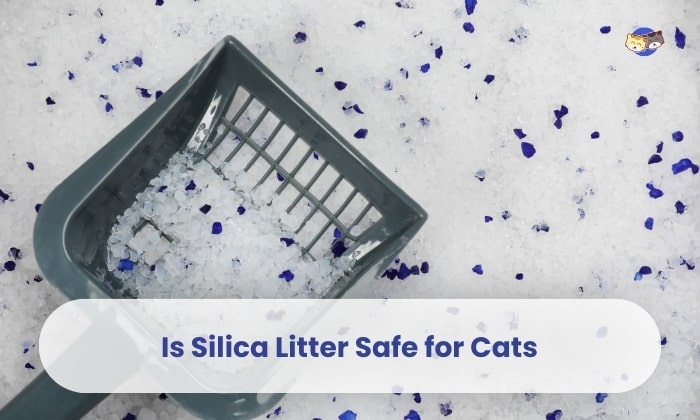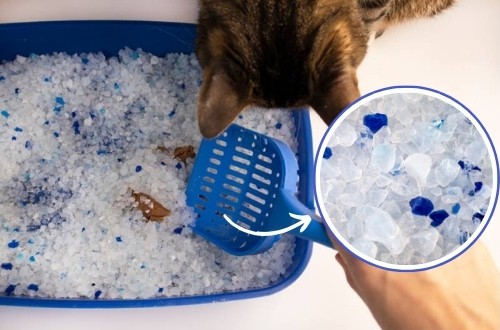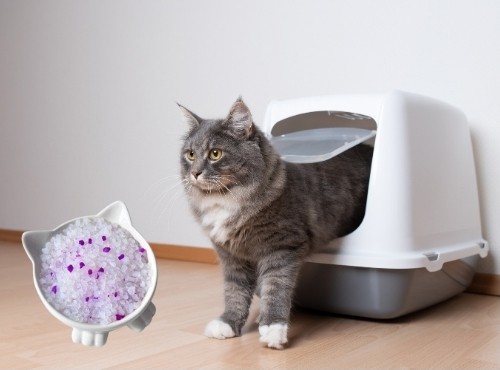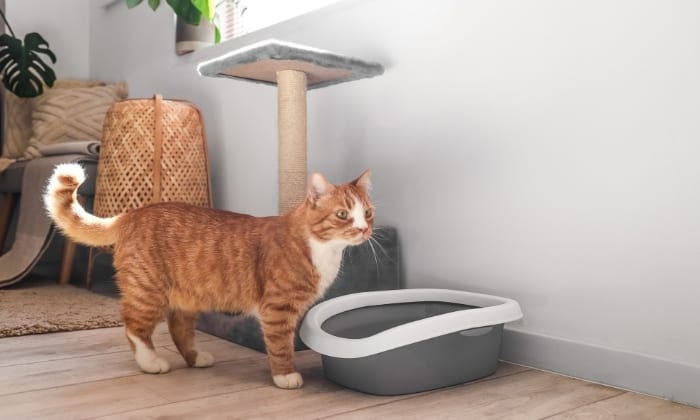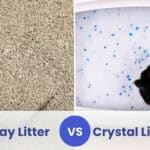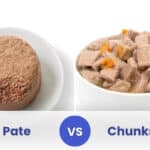As a responsible kitty parent, knowing a lot about your feline companion’s safety is vital. These things include the best products for pet hygiene at home. Which leads us to the question: Is silica litter safe for cats?
There are tons of cat litter materials that you can use, and one of the best is Silica or Crystal Litter. In this guide, see the reasons why.
Table of Contents
Understanding Silica Cat Litter
1. Definition & Composition
Silica or crystal cat litter is made from silica gel, a crystal or sand form of silicon dioxide. It is a material that is highly absorbent and known to be effective at odor control.
As a product, it gained popularity for its low dust content and longer-lasting performance compared to standard clay-based kitty litter.
Crystal litter dots absorb and trap moisture, including feline urine, which is a real head-scratch due to its odor, not to mention this silica’s potential to hinder the growth of bacteria.
The design also contributes to the litter’s lightweight essence and its ability to stay dry on the surface.
In other words, cat owners who are seeking a super low-maintenance and odor-controlling solution got their answer in these beads. You can say goodbye to scooping cat boxes because this litter type is not prone to clumping.
You only need to stir the silica gel from time to time to ensure it works well.
2. The Pros and Cons of Using Silica Litter for Your Cats
In this part, learn what is bad for cats and what is good for them when using silica litter. See the facts below:
The Major Pros
- Odor Control: Silica-based cat litter effectively absorbs and controls odors, keeping the litter box fresher for a longer duration.
- Low-dust: It produces minimal dust compared to clay litters, promoting a cleaner environment for cats and owners.
- Lightweight: Silica litter is lightweight, making it easier to handle during changes and reducing the overall weight of the litter box.
- Long-Lasting: It tends to last longer than standard clay litters and isn’t susceptible to mold and spoilage, requiring less frequent subs and potentially saving on overall costs.
The Major Cons
- Non-eco friendly: Silica mining can cause pollution and disrupt natural habitats. Silica gel is also not biodegradable and may take a long time to degrade in landfills.
- Cost: It can be more expensive than clay litters, although the longer lifespan may offset the initial investment.
- Not Flushable: As it’s non-biodegradable, flushing silica gel is a no-no.
- Preference: Some cats may prefer the texture of clumping litter, and the silica-free types like wheat litter may be better for them.
In recap, while crystal litter offers amazing benefits, you must be thorough in evaluating your options. Cat owners should consider their cats’ preference and likely picks when choosing the proper litter option.
Safety Concerns Around Silica Litter
There are a lot of doubts regarding this type of litter, like whether it can hurt cats’ paws or not. Well, that is why this guide has the explanation you need.
Crystalline silica (the type in clay litter) and amorphous silica (which is in silica litter) are different types of chemicals with varying structures and uses. People often mistake these litters for one another, which leads to questions about their safety.
- Crystalline silica looks like transparent crystals and is often found in construction. Breathing in dust from activities like cutting or crushing crystalline silica can be toxic, causing respiratory problems and lung diseases.
- On the other hand, amorphous silica gel comes in powdery or gel-like forms and is used in things like desiccants. While it’s generally not harmful when inhaled, ingesting this dust can upset the digestive tracts, though this is a common concern with all types of litter.
Proper safety and ventilation are vital means to stay safe when dealing with either type of silica.
Other than that, some cats may resist using the litter box if they find the texture of silica litter awkward, potentially leading to them doing their business elsewhere.
Certain products also have sharper crystals than others, so make sure you’re picking silica that’s gentle on the paws, but note that tracking can be a bigger issue in this case.
Avoid scented litter while you’re at it. Cats may find the smell overwhelming and discomforting.
Despite these concerns, many cat owners find the benefits of silica litter, such as effective odor control, outweigh the potential drawbacks. Managing these issues through proper usage, regular upkeep, and observing your cat’s behavior can help ensure a positive experience with silica cat litter.
Conclusion
In conclusion, is silica litter safe for cats? The answer still depends on your feline. There are several factors that might make this litter type a Godsend for your kitties, but if not, you can look at other products. You should also pick the product that is good for the environment.
We hope the info here is helpful for you in becoming a more reliable pet owner.

I pursued veterinary studies at the University of Kansas. After several years of practice, I established a veterinary clinic in Kansas. When Michael extended an invitation with a vision that went beyond emergency support – sharing of caregiving information for guardians to create the best living environment for cats, I didn’t hesitate to join the organization.
My role here involves verifying the information presented on the official website. With my experience, I believe the information provided is entirely accurate. If you have any concerns, please feel free to reach out to me


